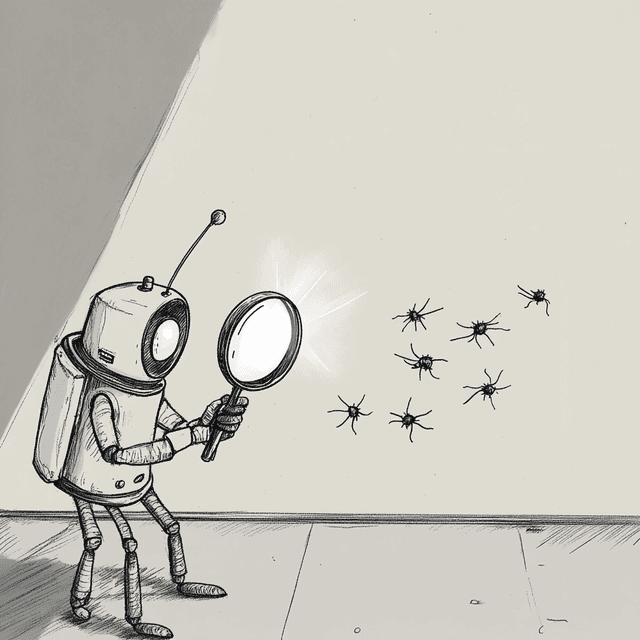In the rapidly evolving world of software development, ensuring the quality and reliability of applications has become more critical than ever. As the complexity of software systems grows, traditional manual testing methods are proving insufficient to keep up with the pace of development and the increasing demands for faster time-to-market.
This is where AI testing tools come into play, offering a revolutionary approach to software quality assurance. By leveraging the power of artificial intelligence and machine learning, these tools are transforming the way we test and validate software applications.
In this article, we'll explore the concept of AI testing tools, their benefits, and how they are reshaping the landscape of software testing. We'll also take a closer look at some of the best free AI testing tools available, empowering developers and QA professionals to enhance their testing processes without breaking the bank.
What are AI Testing Tools?
AI testing tools are innovative solutions that harness the capabilities of artificial intelligence and machine learning to automate and optimize software testing processes. These tools go beyond traditional automated testing by incorporating intelligent algorithms and advanced techniques to improve test coverage, accuracy, and efficiency.
At their core, AI testing tools aim to streamline the testing lifecycle by automating repetitive tasks, generating intelligent test cases, and providing valuable insights into application behavior. They leverage technologies such as computer vision, natural language processing (NLP), and predictive analytics to create smarter and more adaptable testing frameworks.
The Power of AI in Software Testing
The integration of AI in software testing brings a new level of intelligence and automation to the process. Here are some key ways AI testing tools are revolutionizing software quality assurance:
Intelligent Test Case Generation: AI algorithms can analyze application code, user interfaces, and historical data to automatically generate relevant and effective test cases. This reduces the manual effort required in test case creation and ensures comprehensive test coverage.
Visual Testing and UI Validation: AI-powered visual testing tools use computer vision to compare and validate user interfaces across different platforms and devices. They can detect visual regressions, layout issues, and responsive design problems with high accuracy, saving time and effort in manual visual inspections.
Predictive Analytics for Defect Detection: By leveraging machine learning models trained on historical testing data, AI testing tools can predict potential defects and prioritize testing efforts accordingly. This proactive approach helps identify and fix issues early in the development cycle, reducing the risk of costly bugs in production.
Continuous Testing and Integration: AI testing tools seamlessly integrate with continuous integration and continuous delivery (CI/CD) pipelines, enabling automated testing at every stage of the development process. This ensures that code changes are thoroughly tested before deployment, minimizing the chances of introducing new defects.
Benefits of AI Testing Tools
The adoption of AI testing tools brings numerous benefits to software development teams, including:
Increased Test Coverage and Accuracy: AI algorithms can generate a wide range of test cases, covering various scenarios and edge cases that manual testers might overlook. This leads to improved test coverage and higher chances of catching defects early.
Faster Time-to-Market: By automating time-consuming testing tasks and reducing manual effort, AI testing tools accelerate the testing process. This enables development teams to deliver high-quality software faster, meeting the ever-increasing demands of the market.
Cost Savings: Automating repetitive testing tasks and reducing the reliance on manual testing efforts translates to significant cost savings for organizations. AI testing tools optimize resource utilization and allow teams to focus on more strategic and value-adding activities.
Adaptability to Change: AI testing tools can adapt to changes in the application under test, automatically updating test cases and adjusting testing strategies. This adaptability ensures that testing remains effective and efficient even in dynamic development environments.
Free AI Testing Tools: Empowering Quality Assurance
While AI testing tools offer immense benefits, the cost of commercial solutions can be a barrier for some organizations. However, the good news is that there are several free and open-source AI testing tools available that provide powerful capabilities without the hefty price tag.
These free AI testing tools cover a wide range of testing areas, from test automation and visual testing to API testing and accessibility testing. They leverage AI and ML technologies to automate test case generation, improve defect detection, and provide valuable insights into application behavior.
For example, tools like Testim.io and Mabl offer AI-powered test automation solutions that can automatically generate test scripts based on user interactions and application flows. Visual testing tools like Applitools and Percy by BrowserStack use computer vision to compare and validate UI elements across different platforms and devices.
In the realm of API testing, tools such as Postman and Tricentis Tosca leverage AI algorithms to generate API test cases, validate responses, and identify performance bottlenecks. Accessibility testing tools like axe by Deque and WAVE by WebAIM use AI to identify accessibility issues and ensure compliance with standards like WCAG.
These free AI testing tools provide a cost-effective way for development teams to incorporate AI capabilities into their testing processes. They offer a range of features and benefits, enabling teams to improve test coverage, reduce manual effort, and deliver high-quality software faster.
It's important to note that while free AI testing tools offer valuable capabilities, they may have limitations compared to their commercial counterparts. However, for many organizations, these free tools can serve as a starting point to explore the potential of AI in software testing and gradually build a more comprehensive testing strategy.
Types of AI Testing Tools
Modern AI testing tools break down into distinct categories, each addressing specific aspects of the software testing lifecycle. Understanding these categories helps teams select the right combination of tools for their testing needs.
Test Automation Tools
Test automation tools powered by AI represent a significant leap forward from traditional automation frameworks. These tools use machine learning algorithms to maintain test scripts automatically, reducing the maintenance burden on testing teams. The most sophisticated solutions can analyze application changes and automatically update test cases, eliminating hours of manual script maintenance.
Smart test automation tools also excel at pattern recognition—they can identify common UI elements across different pages and automatically generate reusable test components. This capability proves especially valuable in large applications where similar patterns appear throughout the interface.
Visual Testing Tools
Visual testing tools employ advanced computer vision algorithms to detect subtle changes in application interfaces. These tools go beyond simple pixel-to-pixel comparisons by understanding the semantic meaning of UI elements. They can distinguish between intentional changes (like updated content) and actual bugs (like misaligned elements or incorrect styling).
Modern visual testing platforms can handle dynamic content intelligently, automatically excluding irrelevant changes like timestamps or randomized data from comparison results. This smart filtering dramatically reduces false positives and allows teams to focus on real visual regressions.
API Testing Tools
AI-driven API testing tools bring intelligence to backend testing by learning from API traffic patterns and automatically generating comprehensive test scenarios. These tools can identify complex relationships between API endpoints and create tests that cover various data combinations and edge cases.
The most advanced API testing solutions can predict potential performance bottlenecks by analyzing response patterns and payload sizes. They can also suggest optimal test scenarios based on API usage patterns and historical test results, like we offer at Trunk.
Accessibility Testing Tools
AI-powered accessibility testing tools use machine learning models trained on WCAG guidelines to automatically identify potential accessibility issues. These tools can simulate different user scenarios, such as screen reader interactions, and provide detailed recommendations for improving accessibility.
The most sophisticated accessibility tools can analyze not just static content but also dynamic interactions, ensuring that interactive elements remain accessible throughout different application states. They can detect issues like insufficient color contrast, missing ARIA labels, and keyboard navigation problems while providing context-aware suggestions for remediation.
Implementing AI Testing Tools
The successful implementation of AI testing tools requires a strategic approach that considers both technical requirements and team dynamics. A thoughtful implementation strategy ensures maximum value from these tools while minimizing disruption to existing workflows.
Choosing the Right Tool
The selection process starts with a thorough assessment of your testing needs and pain points. Teams should evaluate their current testing coverage, identify areas where manual testing consumes significant resources, and pinpoint processes that could benefit from AI automation.
When evaluating AI testing tools, consider these key factors:
Technical Compatibility: The tool must integrate seamlessly with your existing tech stack, version control systems, and CI/CD pipeline
Learning Curve: Tools with intuitive interfaces and comprehensive documentation reduce adoption time and resistance from team members
Scalability: The solution should handle increasing test volumes and complexity as your application grows
Support and Updates: Regular updates and responsive technical support ensure the tool remains effective as technology evolves
Integrating with Existing Workflows
Integration requires careful planning to avoid disrupting established development processes. Start by mapping out your current testing workflow and identifying natural insertion points for AI testing tools. The goal is to enhance—not replace—existing processes.
A phased implementation approach often works best. Begin with a single test suite or feature, allowing the team to become comfortable with the new tools before expanding usage. This measured approach helps identify and address integration challenges early while building team confidence.
Best Practices for AI Testing Success
Teams that successfully implement AI testing tools typically follow several key practices:
Establish Clear Metrics: Define specific, measurable goals for your AI testing implementation. These might include:
Reduction in manual testing time
Improvement in test coverage
Decrease in escaped defects
Faster feedback cycles in the development process
Invest in Team Training: Comprehensive training ensures team members understand both the capabilities and limitations of AI testing tools. Create documentation specific to your implementation and establish internal champions who can support their colleagues during the transition.
Monitor and Adjust: Track the effectiveness of your AI testing implementation through regular reviews. Pay attention to:
Test execution times
False positive rates
Resource utilization
Team productivity metrics
Maintain Test Quality: While AI can automate many testing tasks, human oversight remains crucial. Create processes for:
Regular review of AI-generated test cases
Validation of test results
Refinement of test scenarios based on real-world usage
Adjustment of AI parameters to improve accuracy
The Future of AI in Software Testing
The next generation of AI testing tools promises to revolutionize how we approach software quality assurance. These advanced systems will leverage sophisticated machine learning models to predict potential issues before they manifest in production environments. By analyzing patterns in code changes, test results, and production metrics, AI systems will provide early warnings about areas that require additional testing or attention.
Evolution of Testing Roles
The advancement of AI testing tools will transform the role of QA professionals from test execution to strategic quality engineering. Testing specialists will focus on designing sophisticated test strategies, interpreting AI-generated insights, and making critical decisions about risk management. This shift demands a new skill set: QA engineers must develop expertise in data analysis, machine learning fundamentals, and strategic test planning.
Predictive Testing Capabilities
Next-generation AI testing platforms will introduce capabilities that seem almost prescient:
Smart Test Generation: AI systems will automatically create test scenarios based on predicted user behaviors and potential failure points
Autonomous Testing: Self-healing test suites will adapt to application changes without human intervention
Risk-Based Testing: Machine learning models will identify high-risk areas in code and automatically adjust testing coverage
Performance Prediction: AI systems will forecast performance bottlenecks before they impact users
Collaborative AI Systems
The future of testing will see AI systems working alongside human testers in more sophisticated ways. These collaborative systems will learn from human decision-making patterns while providing insights that humans might miss. The combination of human intuition and AI capabilities will create testing processes that are both more efficient and more thorough than either could achieve alone.
As we navigate the exciting landscape of AI testing tools, it's clear that the future holds immense potential. By embracing these innovative solutions, you can revolutionize your software quality assurance processes and stay ahead of the curve.
If you're curious to learn more about how AI can transform your testing workflows, check out our guide on test automation. We dive deep into the strategies and best practices that can help you harness the power of AI and take your testing to the next level.






